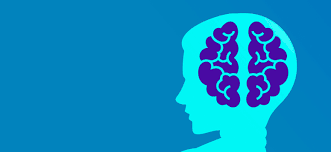介紹
本課程共有8週,每一週有8~9個小單元組成。每個小單元提供一段15~20分鐘的影片,以及課後習題。學習者可在觀看課程影片後練習課後習題,以幫助學習者快速確認是否了解上課內容(習題不計分)。本課程每個單元的學習總時間以一週為限,本課程於完成4週課程後,即進行期中考;在完成第8週課程後,即進行期末考。
本課程提供線上測驗,通過者可申請"修課證明"作為學習履歷之佐證。
“修課證明" 將於測驗完畢後,符合資格者系統計算分數(約半天)後立即發放。
章節
* 以下章節為預覽,請點報名後點選開始上課,進入課程-
Week 1.Organization of the nervous systems
- ● Unit 1-1. Anatomical organization of CNS and PNS
- ● 1-1Quiz
- ● Unit 1-2 .Functional organization of the brain
- ● 1-2Quiz
- ● Unit 1-3.Regional specialization of the cerebral cortex
- ● 1-3Quiz
- ● Unit 1-4 . Neural organization of perception
- ● 1-4Quiz
- ● Unit 1-5.Neural organization of cognition
- ● 1-5Quiz
- ● Unit 1-6.Neural organization of action
- ● 1-6Quiz
- ● Unit 1-7.Quantification of perception and action
- ● 1-7Quiz
- ● Unit 1-8.Functional imaging of the brain
- ● 1-8Quiz
-
Week 2.Sensation and perception: touch and pain
- ● Unit 2-1. Sensory receptors and sensory coding
- ● 2-1Quiz
- ● Unit 2-2. Sensory processing beyond receptors
- ● 2-2Quiz
- ● Unit 2-3. The somatosensory system
- ● 2-3Quiz
- ● Unit 2-4. Mechanoreceptors and touch
- ● 2-4Quiz
- ● Unit 2-5. Tactile information processing
- ● 2-5Quiz
- ● Unit 2-6. Thermal receptors and temperature
- ● 2-6Quiz
- ● Unit 2-7. Nociceptors and pain
- ● 2-7Quiz
- ● Unit 2-8. Nociceptive information processing
- ● 2-8Quiz
-
Week 3.Sensation and perception: vision I
- ● Unit3- 1. Eye, brain, and vision
- ● 3-1Quiz
- ● Unit3- 2. Phototransduction and adaptation
- ● 3-2Quiz
- ● Unit3- 3. Neural organization of the retina
- ● 3-3Quiz
- ● Unit3- 4. Retinal ganglion cells
- ● 3-4Quiz
- ● Unit3- 5. Neural organization of the primary visual cortex
- ● 3-5Quiz
- ● Unit3- 6. Intermediate-level visual processing
- ● 3-6Quiz
- ● Unit 3-7. Color vision
- ● 3-7Quiz
- ● Unit3- 8. Depth and motion perception
- ● 3-8Quiz
-
Week 4.Sensation and perception: vision II
- ● Unit 4-1. Contextual effect of visual perception
- ● 4-1Quiz
- ● Unit4- 2. Object perception
- ● 4-2Quiz
- ● Unit4- 3. Perceptual constancy
- ● 4-3Quiz
- ● Unit4- 4. Visual memory
- ● 4-4Quiz
- ● Unit4- 5. Internal representations of space
- ● 4-5Quiz
- ● Unit4- 6. Visuomotor control
- ● 4-6Quiz
- ● Unit 4-7. Scene stabilization during saccades
- ● 4-7Quiz
- ● Unit4- 8. Attention and visual processing
- ● 4-8Quiz
-
Week 5.Sensation and perception: audition, olfaction, and gustation
- ● Unit5- 1. Mechanoelectrical transduction of hair cells
- ● 5-1Quiz
- ● Unit5- 2. Cochlear structure and frequency coding
- ● 5-2Quiz
- ● Unit5- 3. Sound localization and spatial mapping
- ● 5-3Quiz
- ● Unit5- 4. Sound perception and vocal learning
- ● 5-4Quiz
- ● Unit 5-5. Olfactory receptors and coding
- ● 5-5Quiz
- ● Unit 5-6. Neural organization of odor perception
- ● 5-6Quiz
- ● Unit 5-7. Taste receptors and taste buds
- ● 5-7Quiz
- ● Unit 5-8. Gustatory information processing
- ● 5-8Quiz
-
Week 6.Movement and action: peripheral mechanisms
- ● Unit 1. Muscle structure and force
- ● 6-1Quiz
- ● Unit 2. Motor unit
- ● 6-2Quiz
- ● Unit 3. Muscle action
- ● 6-3Quiz
- ● Unit 4. Local spinal circuits of reflexes
- ● 6-4Quiz
- ● Unit 5. Regulation of spinal reflexes
- ● 6-5Quiz
- ● Unit 6. Central pattern generator and locomotion
- ● 6-6Quiz
- ● Unit 7. Neural control of locomotion
- ● 6-7Quiz
-
Week 7.Movement and action: central control
- ● Unit 7-1. Eye movements and extraocular muscles
- ● Quiz7-1
- ● Unit 7-2. The control of gaze
- ● Quiz7-2
- ● Unit 7-3. The vestibular apparatus and vestibulo-ocular reflex
- ● Quiz7-3
- ● Unit 7-4. The vestibular system
- ● Quiz7-4
- ● Unit 7-5. Postural equilibrium and orientation
- ● Quiz7-5
- ● Unit 7-6. Sensory integration and control of posture
- ● Quiz7-6
- ● Unit 7-7. Neural organization of cerebellum
- ● Quiz7-7
- ● Unit 7-8. Functions of cerebellum
- ● Quiz7-8
- ● Unit 7-9. The basal ganglia
- ● Quiz7-9
-
Week 8.Movement and action: coordination and planning
- ● Unit 8-1. Motor commands and sensorimotor transformation
- ● Quiz8-1
- ● Unit 8-2. The organization and planning of movement
- ● Quiz8-2
- ● Unit 8-3. Cortical areas for voluntary motor control
- ● Quiz8-3
- ● Unit 8-4. Neural coding of motor commands
- ● Quiz8-4
- ● Unit 8-5. Neuroprosthesis and adaptive motor learning
- ● Quiz8-5
- ● Unit 8-6. Voluntary movement: reaching for an object
- ● Quiz8-6
- ● Unit 8-7. Voluntary movement: grasping an object
- ● Quiz8-7
- ● Unit 8-8. Planning action and mirror neurons
- ● Quiz8-8
常見問題
線上成績單 :此課程不提供線上成績單,僅供成績顯示
學習履歷 :
此課程不提供學習履歷
指定用書
Eric R. Kandel, James H. Schwartz, Thomas M. Jessell, Steven A. Siegelbaum and A. J. Hudspeth, Principles of Neural Science, 5th Ed., 2012.
特別感謝書商麥格羅﹒希爾(McGraw-Hill)提供書籍圖片授權以俾進行影片製作,以下為此書籍之連結資訊。(點我開啟)
參考資料
- Dale Purves, George J. Augustine, David Fitzpatrick and William C. Hall, Neuroscience, 5th Ed., 2011.
- Larry Squire, Darwin Berg, Floyd E. Bloom and Sascha du Lac, Fundamental Neuroscience, 4th Ed., 2012.
- John G. Nicholls, A. Robert Martin, Paul A. Fuchs and David A. Brown, From Neuron to Brain, 5th Ed., 2011.
先修課程
具備生物學基本概念即可
講師

焦傳金
國立清華大學生命科學系 教授 | 查看講師評價
0.0
平均評價
本課程尚未有人來評價
預覽影片 & 簡介
2022-自學課程-系統神經科學(1-6月)
腦科學為21世紀最重要的研究領域,而神經科學即是腦科學的基礎。本課程將介紹神經網絡的結構與功能,特別專注探討感覺神經系統與運動神經系統。藉由觀念解說與實驗數據的分析,讓修習的學生能瞭解神經系統運作的基本法則。



